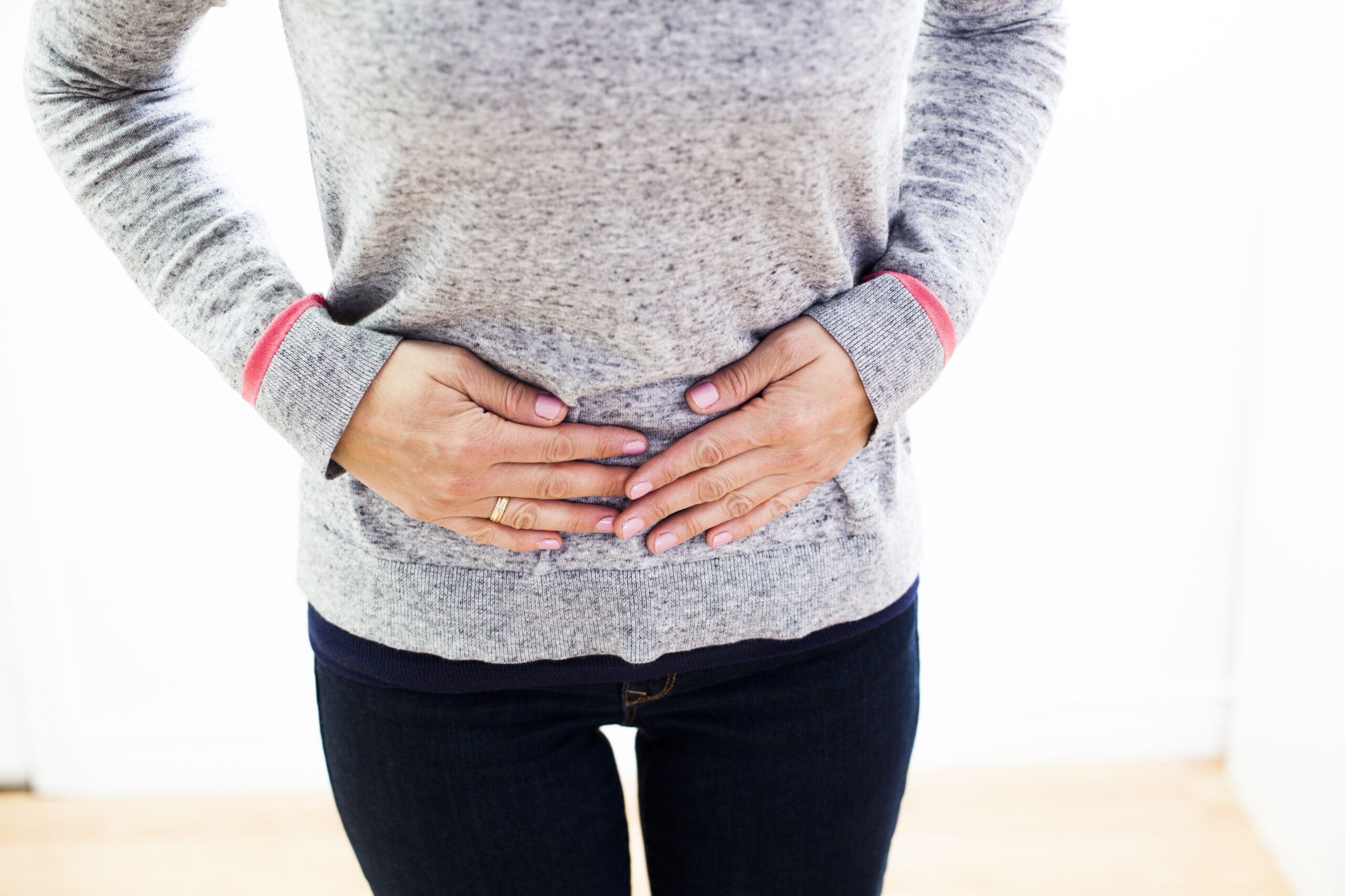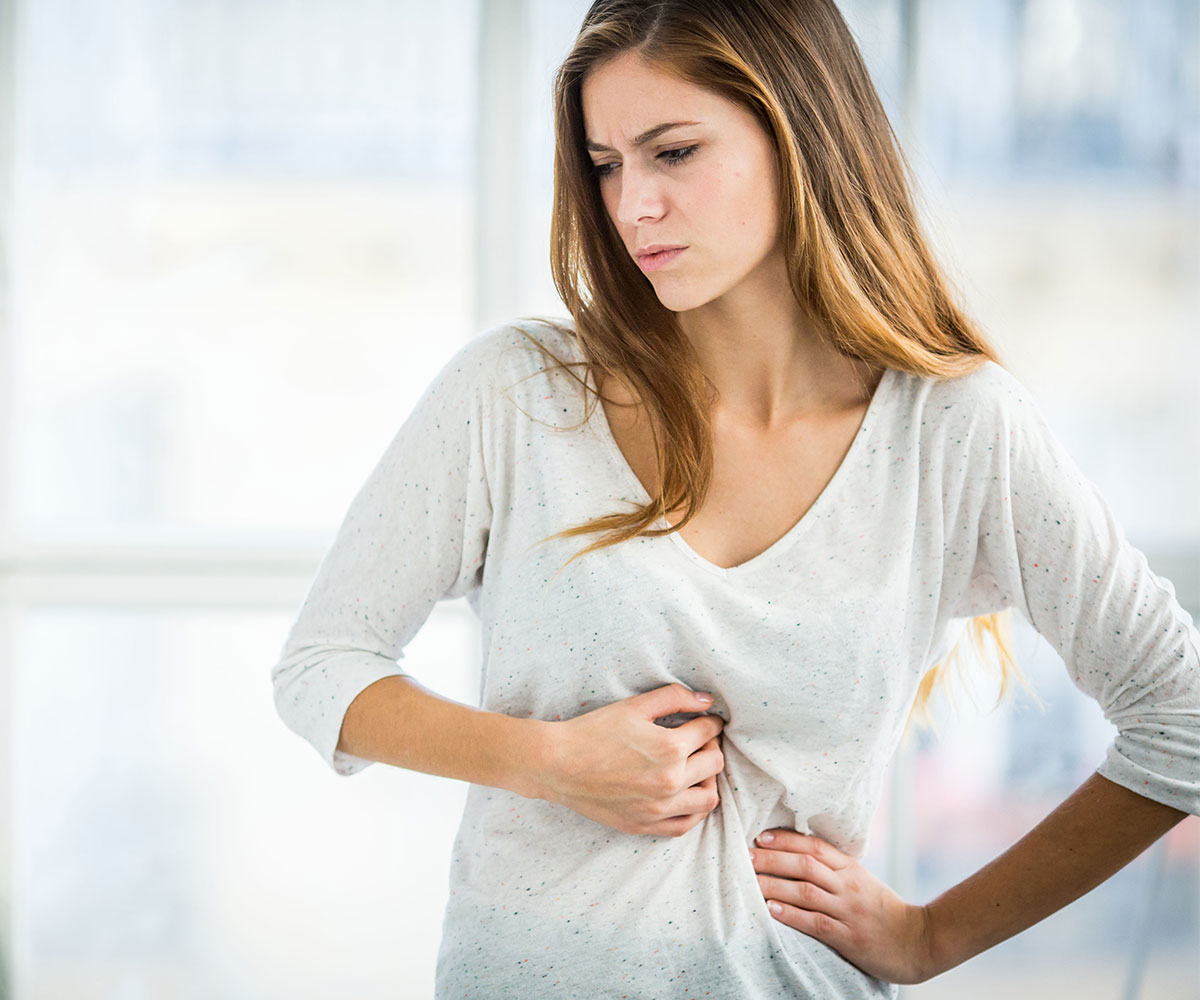Endometriosis is a gynaecological disease that affects one in ten women of reproductive age. That’s 1.5 million in the UK alone, a staggering 176 million worldwide, and despite this relatively little is known about it. What we know from those women is that endometriosis pain affects them every single day.
On average, women will wait seven and a half years from first experiencing the symptoms of endometriosis to finally getting an endometriosis diagnosis. Since research is so slow on the women’s health issue, we’ve decided to find out everything you need to know about endometriosis. From what the symptoms are to what treatment is available, here’s what you should be aware of…
Why did Lena Dunham have a hysterectomy because of endometriosis?
In recent years, we’ve started hearing a bit more about endometriosis thanks to celebrities sharing their personal experiences – including, in Lena Dunham’s case, the difficult decision to undergo a hysterectomy.
Despite this, endometriosis remains something of a medical mystery for far too many women (and their doctors!) – so here’s your need to know.
First things first, what is endometriosis?
“Endometriosis is when the lining of the womb – the endometrial tissue – finds its way into the pelvis. Basically, it’s blown back through the fallopian tubes and finds itself stuck to the organs in the pelvis,” explains specialist endometriosis nurse Wendy Rae Mitchell, who’s a member of Endometriosis UK’s Medical Advisory Panel, and the only nurse on the council of the British Society for Gynaecological Endoscopy (BSGE).
“These endometrial] cells respond to the hormones produced by the ovaries each month and so also bleed when you have your period,” adds Professor Nick Raine-Fenning, spokesperson for the [Royal College of Obstetricians and Gynaecologists (RCOG).
“Unlike the cells from the womb lining, which can leave the body through the vagina during menstruation, the endometriotic cells have nowhere to escape. This leads to pain and inflammation and, in some women, damage to the pelvic organs through the formation of scar tissue and cysts.”

Endometriosis signs and symptoms
Endometriosis symptoms can include: “period pain that isn’t relieved by painkillers; irregular or heavy periods; pain during and after sex; pain or discomfort when going to the toilet; bleeding from the bottom or blood in the stool; and feeling tired all the time,” Professor Raine-Fenning explains. “The period pain is often severe and tends to occur before the period starts. However, some women have no symptoms at all.”
Endometriosis symptoms checklist
The main endometriosis pain areas are around the pelvis, typically affecting the abdomen and back – but it may also affect the legs and cause hip pain. “It really is a debilitating, cruel disease,” Wendy says. “Women experience pain that can be so bad they can’t even get out of bed.”
For 26-year-old Saschan Fearon-Josephs, that pain is a daily fact of life. “A good day for me is still a day with pain,” she says. “I have some form of pelvic inflammation every day. I get fatigue from being in pain constantly, it impacts my sleeping pattern which in turn triggers my endo to flare up. I get swelling and water retention in my legs and knees.”
On her worst days, she adds: “I’ve not only been unable to get out of bed, I’ve physically been unable to walk or bear any weight on my joints due to the pain which often radiates down my legs and into my knees.”

What’s the difference between period pain and endometriosis pain?
While normal periods can be a right royal pain in the uterus for a few days each month, endometriosis can have a seriously debilitating impact on sufferers’ everyday lives – from social isolation and problems retaining employment, to issues with sex and fertility.
“I wish I could say it was just period pain! If I knew that the symptoms associated with my endometriosis only came round once a month I would have a much better quality of life than I have right now,” Saschan says.
“My bladder is completely unpredictable so I have to plan my entire social life around what toilets are nearby. At 26, you don’t expect to have to pack a spare change of underwear or wear panty liners whenever you go out, just in case,” she adds.
For Saschan, endometriosis really does impact on every single aspect of daily life. “I’ve lost my job as a result of my two most recent surgeries. I find sex painful a lot of the time, and it often triggers a flare up of inflammation in my pelvic area for 24 hours afterwards,” she explains.
“I struggle with brain fog, anxiety, and low mood, and my weight fluctuates a lot due to ‘endo belly’ and water retention, which makes me self-conscious about how I look,” Saschan adds.
“It’s physically, mentally, and emotionally draining,” she says. “I feel as though I’m continually going through a process of grieving for all the things I’ve lost and all the things I may never have. I find it difficult to be around my friends and family who have small children because I’m acutely aware of my fertility.”
How is endometriosis treated?
Although there is currently no cure for endometriosis, endometriosis can be treated with medical interventions to ease pain and help women manage their symptoms, and – if necessary – surgery to remove endometriotic tissue.
Typical endometriosis pain treatment includes the use of anti-inflammatory painkillers, such as ibuprofen; and hormonal medicines and contraceptives, such as the combined pill, the contraceptive patch, or the intrauterine system (Mirena coil).
For some women, Professor Raine-Fenning explains: “Lifestyle changes and natural remedies can help relieve some of the symptoms, such as exercise, a healthy, well-balanced diet and the use of a hot water bottle or taking a hot bath.”
In more extreme cases though, he adds: “Surgery is needed to treat or remove the endometriotic tissue, especially when scar tissue and/or cysts are present. This type of surgery can be complicated but there are several centres of excellence in the UK.”
How is endometriosis detected?
Endometriosis can only be diagnosed using a procedure called a laparoscopy, “where a surgeon passes a thin tube through a small cut in your skin so they can see any patches of endometriosis tissue.”

Why is endometriosis so difficult to diagnose?
However, it’s notoriously difficult to get a diagnosis of endometriosis. According to Professor Raine-Fenning, this is partly because: “Every woman experiences the condition differently, and because symptoms can be similar to other illnesses such as irritable bowel syndrome or pelvic inflammatory disease.”
But there’s arguably also an element of medical sexism, whereby women’s pain isn’t taken seriously and symptoms are dismissed as ‘normal’ period pain. A 2017 report by the All Party Parliamentary Group on women’s health found that 40 per cent of women with endometriosis saw their GP ten or more times before being referred to a gynaecology specialist.
“Typically a GP may just say, ‘that’s quite common’ and try you on the pill,” says Wendy. “The pill helps to keep your symptoms at bay because you’re not having periods, but the symptoms will come back when you come off the pill. If it affects the bowel, so the woman has painful bowel symptoms, it’s also often misdiagnosed as Irritable Bowel Syndrome (IBS),” she adds.
Endo sufferer Neelam Heera, 28, says: “My doctor dismissed my symptoms for sometime. Due to this difficult relationship, and being made to feel that I was a hypochondriac, I disliked seeing a GP. I was simply told to lose weight and take the contraceptive pill to ease my pain and emotional imbalances.”
After being misdiagnosed with both Polycystic Ovary Syndrome (PCOS) and IBS, Neelam says it wasn’t until she was hospitalised, after several days of intense pain and missing university lectures, that she was eventually diagnosed with endometriosis.
New guidelines published last year by the National Institute for Health and Care Excellence (NICE) urged doctors to take possible endometriosis symptoms seriously, and seek earlier referrals for women complaining of chronic pelvic pain.
For more information, visit Endometriosis New Zealand.
Via our sister site Grazia.

.jpg)